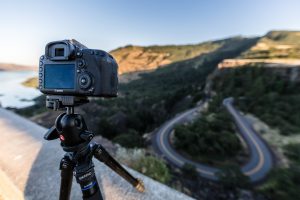Often, the functionality of inexpensive point-and-shoot cameras is very similar to photo functionality of smartphones. A camera would have minimal settings available and even they will be hidden deep in a menu. Anyone amateur and professional photographer knows that going four levels deep into a menu to change an important parameter, such as ISO sensitivity, is very inconvenient and not practical. A camera wit h a lot of settings needs to have an ISO and White Balance buttons and dials that allow the photographers to change the settings based on their intuition, without giving it much thought or time.
h a lot of settings needs to have an ISO and White Balance buttons and dials that allow the photographers to change the settings based on their intuition, without giving it much thought or time.
When you operate a non-SLR camera, you have a lens attached to the camera. While some non-SLR models did come with attachments in the past, the attachments tended to decrease the sharpness of the pictures. This means that a point-and-shoot camera is only good for one type of pictures. For example, if you want to take a lot of photos of outdoor architecture, a good choice would be a digital camera that is similar to wide-angle regular 24 millimeter film camera. If you want to shoot a lot of action sports, a camera similar to 400mm film camera would be a good choice. However, if you want to shoot various pictures in different settings, a point-and-shoot camera will significantly limit what you can do.
When you have a dSLR, you have fewer limitations. You can have several lens for various occasions and different types of pictures. You can invest in a lens designed specifically for micro close-up photos. You can find lenses that are wide or narrow, long or short.
